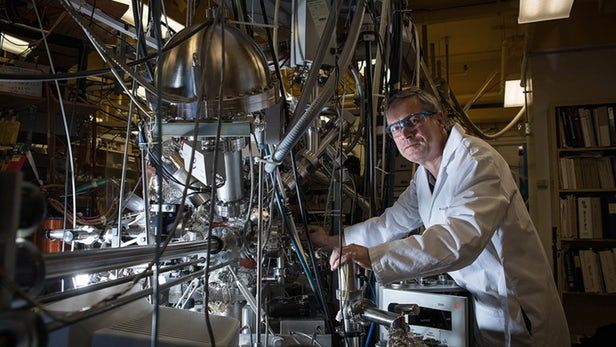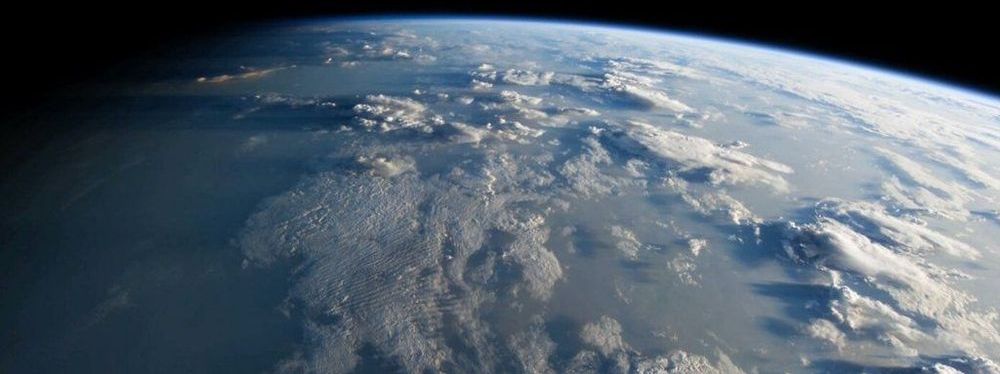Year-round vegetables, minimal resources, climate-resistant—we’ve sung praises about vertical farms many times before. But Singapore’s Sky Greens is something very special.


Year-round vegetables, minimal resources, climate-resistant—we’ve sung praises about vertical farms many times before. But Singapore’s Sky Greens is something very special.



An expert from the University of South Florida deduced how big a bolt of lightning was based on the size of rocks formed by lightning.
When lightning strikes sand it creates a new type of rock, called fulgurite – a hollow tube formed as the lightning travels through the sand, vaporizing it and melting its outer edges.
Researchers determined that on average, the energy required to form these rocks was at least about one megajoule per meter of fulgurite formed.

By New Scientist, An Energy Realities Partner
Nobody has all the answers to the world’s energy questions, so New Scientist has teamed up with Statoil to search for solutions from New Scientist’s audience.
The question posed was: How much energy is in a lightning bolt? Is it enough, and are there places where lightning strikes often enough, to think about flying kites to transfer that energy to the grid?
Biology professor and researcher Christopher Cullis said he pondered two big questions when he first caught sight of the wild marama bean plant, its definitive patches of green leaves standing out in contrast from among an otherwise parched and brown Namibian landscape.
“Why isn’t this plant affected by the lack of water like everything else—and why isn’t it being eaten by any wildlife?” Cullis said, turning one of the walnut-sized beans over in his fingers and recalling his first trip to the coastal southwest African country about a decade ago. “The answers to those questions make this a very interesting and important legume.”
In fact, Cullis, the Francis Hobart Herrick Professor of Biology at Case Western Reserve University, and partners at universities from three different African countries assert that the hardy-but-humble Tylosema esculentum could someday rise up as a new alternative crop in the often-arid climates of developing countries.

Although oxygen is common throughout the cosmos, most of it isn’t in the form that we as humans need to breathe – molecular oxygen, or O2. Now, researchers at Caltech claim to have created a reactor that can turn carbon dioxide into molecular oxygen, which could help us fight climate change here on Earth or generate oxygen for life in space.


A month after the fire that ravaged the Notre Dame Cathedral in Paris, scientists and research bodies are getting organized to help restore the building—and advance scientific knowledge.
At a public hearing held yesterday by France’s Parliamentary Office for the Evaluation of Scientific and Technological Options (OPECST), academics explained how they can contribute to the government’s efforts to restore the cathedral, which was partly destroyed on 15 April.
“This catastrophe is, in the end, a privileged moment for research, because we’ll have access to materials that we otherwise wouldn’t be able to access,” said Martine Regert, deputy scientific director of the Institute of Ecology and Environment at the French national research agency CNRS. For example, analyzing certain isotopes in the cathedral’s timber frame could provide insights about the medieval climate, said Philippe Dillmann, a research leader at CNRS’s Institute for Research on Archeomaterials.

It’s been exactly one year since US scientists reported a mysterious surge in ozone-destroying chemicals, known as chlorofluorocarbons (CFCs).
Banned in 1987 under the globally signed Montreal Protocol, there was only one explanation: somewhere out there, in an unknown location, someone must have gone rogue, setting back progress on the ozone hole by a decade or more.
After much speculation, the whereabouts and magnitude of these harmful emissions has been confirmed in scientific research. As earlier reporting in The New York Times had already suggested, they seem to be coming from the northeast coast of mainland China.